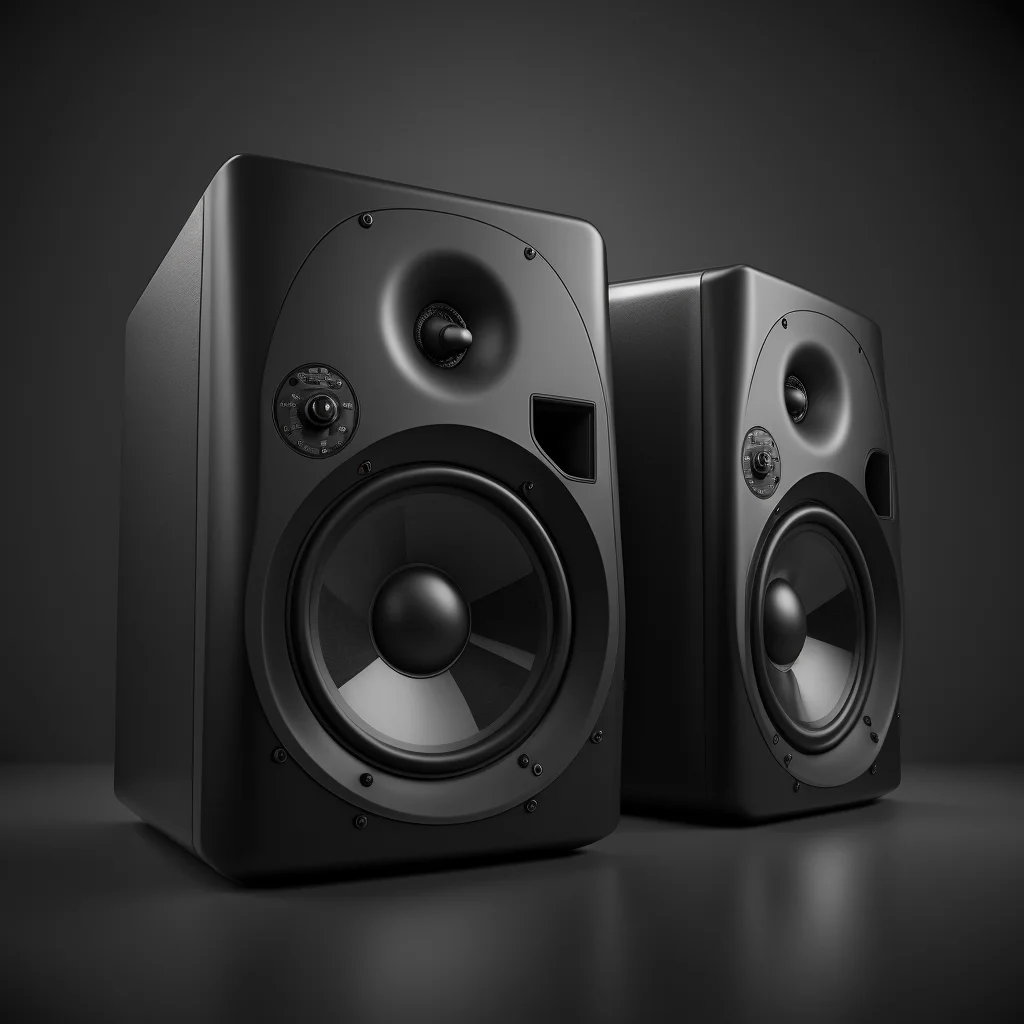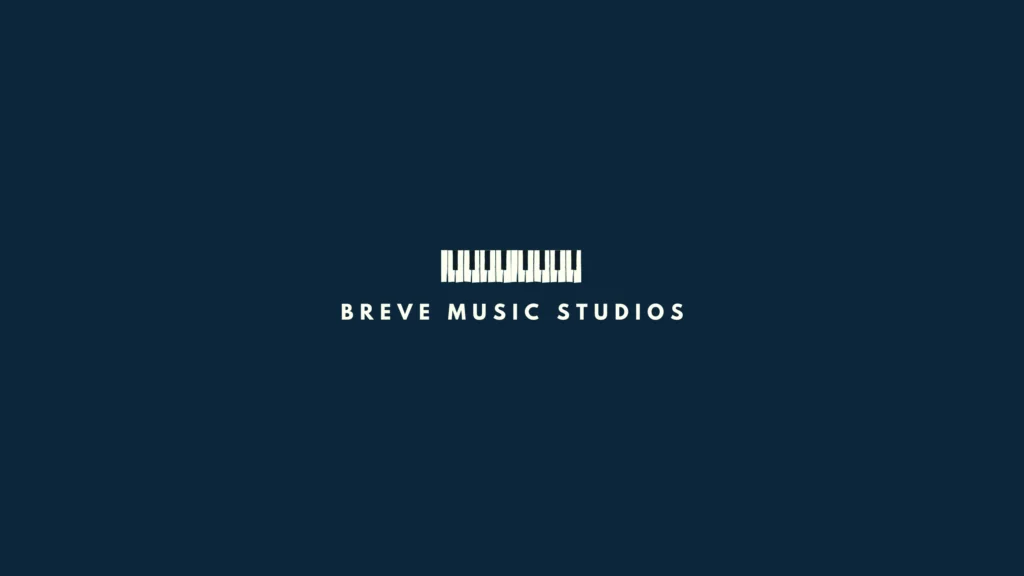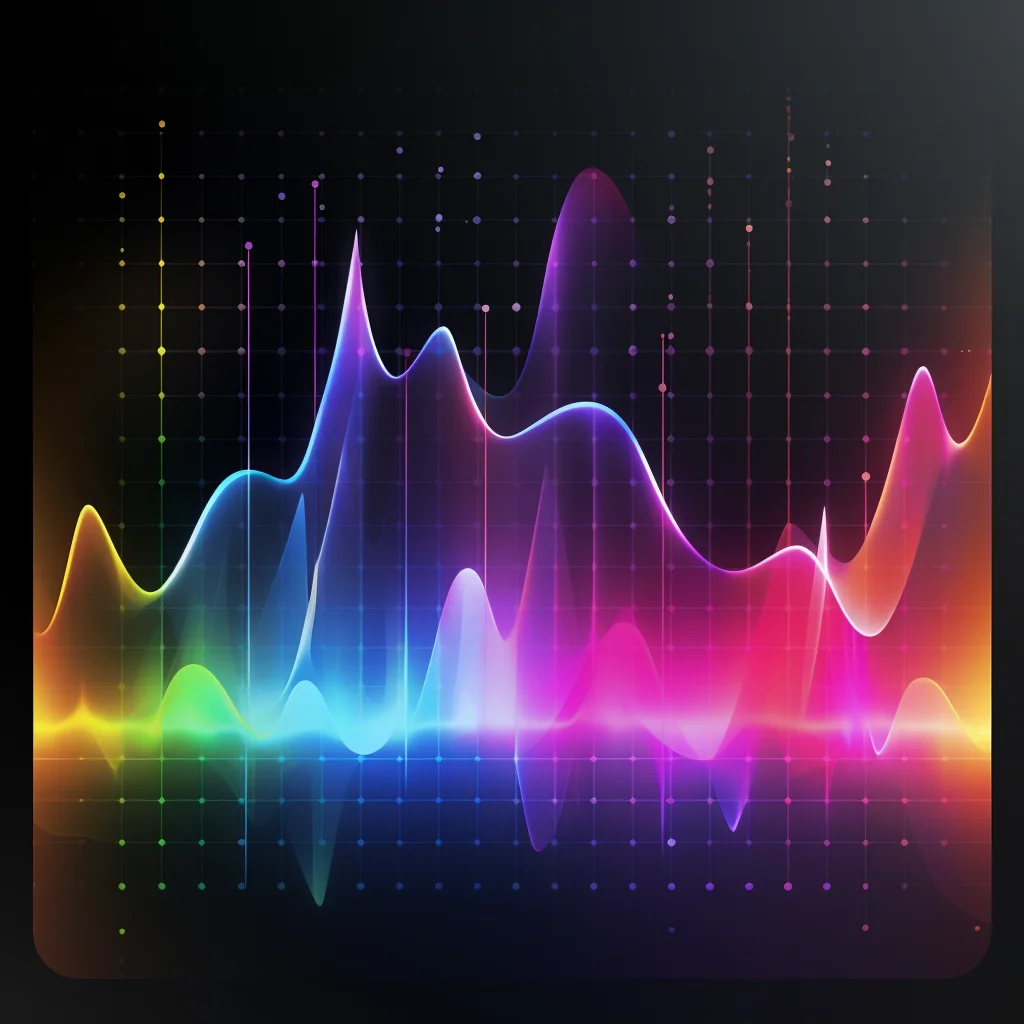Table of Contents
Music Studio Equipment List
If you want to produce music like a professional, you need to have the right equipment in your studio. Here are 10 must-have studio equipment for professional music production:
1. Computer
A powerful computer is the heart of any music production setup. You need a computer with a fast processor, enough RAM, and a large hard drive to handle the demands of modern music production software.
When it comes to music production, having a reliable and powerful computer is essential for producing high-quality music. Whether you’re a beginner or a professional music producer, choosing the right computer can make a significant difference in your workflow and the final product. Here are a few features of a great computer based on budget:
Budget Computer for Music Production (under $1000): If you’re on a tight budget, you can still find a computer that’s powerful enough for music production. Here are some recommended specifications for a budget computer:
- Processor: Intel Core i5 or AMD Ryzen 5
- RAM: 8GB
- Storage: 256GB SSD or higher.
Mid-Range Computer for Music Production (between $1000 and $2000): If you have a bit more to spend, you can get a computer with more powerful specs that can handle larger projects and more plugins. Here are some recommended specifications for a mid-range computer:
- Processor: Intel Core i7 or AMD Ryzen 7
- RAM: 16GB
- Storage: 512GB SSD or higher
High-End Computer for Music Production (over $2000): For professionals or those who want the best performance possible, investing in a high-end computer can be worth it. Here are some recommended specifications for a high-end computer:
- Processor: Intel Core i9 or AMD Ryzen 9
- RAM: 32GB or higher
- Storage: 1TB SSD or higher
Overall, the computer you choose for music studio equipment will depend on your budget and specific needs. While these specifications provide a good starting point, it’s important to research and compare different models before making a final decision. Investing in a reliable and powerful computer can make a significant difference in your music production process and the quality of your final product.
2. Digital Audio Workstation
A Digital Audio Workstation (DAW) is software that allows you to record, edit, and mix your music.
When it comes to digital audio workstations for music production, there are numerous options available. Each DAW has its own strengths, weaknesses, and features that make it unique. Here are a few useful DAWs to include in your studio equipment:
Low Tier ($0-200):
- GarageBand – Available for free on Mac devices, GarageBand is a great option for beginners. It includes a variety of virtual instruments and effects, as well as tools for recording and mixing.
- LMMS – LMMS is a free, open-source DAW that runs on Windows, Mac, and Linux. It features a range of virtual instruments, MIDI support, and a variety of effects plugins.
- Cakewalk by BandLab – Formerly known as SONAR, Cakewalk by BandLab is a free DAW for Windows that includes a range of virtual instruments, effects, and tools for mixing and mastering.
Mid Tier ($200-600):
- Ableton Live – Ableton Live is a popular DAW used by electronic and hip-hop producers. It features a unique session view for live performance and a range of built-in instruments and effects.
- FL Studio – FL Studio, formerly known as Fruity Loops, is a versatile DAW that includes a variety of virtual instruments and effects. It is known for its intuitive workflow and user-friendly interface.
- Logic Pro X – Logic Pro X is a DAW exclusively available for Mac devices. It includes a range of virtual instruments and effects, as well as powerful tools for recording, editing, and mixing.
High Tier ($600+):
- Pro Tools – Pro Tools is a professional-level DAW used by many recording studios and industry professionals. It includes advanced features for recording, editing, and mixing, as well as a range of virtual instruments and effects.
- Cubase – Cubase is a popular DAW used by both electronic and acoustic music producers. It includes a range of virtual instruments and effects, as well as advanced tools for recording, editing, and mixing.
- Studio One – Studio One is a versatile DAW that includes a range of virtual instruments and effects, as well as advanced tools for recording, editing, and mixing. It is known for its user-friendly interface and intuitive workflow.
The best DAW for music production depends on the individual’s needs, preferences, and budget. However, the DAWs mentioned above are all popular and well-regarded options that can meet the needs of both beginners and professionals.
3. Audio Interface
An audio interface is a device that connects your computer to your studio equipment. It converts analog signals to digital and vice versa, allowing you to record and play back audio. You’ll want an interface with high-quality preamps and a low noise floor.
When it comes to music production, having a reliable audio interface is crucial for high-quality recordings. An audio interface serves as the bridge between your computer and the rest of your studio equipment, allowing you to record and monitor audio with low latency and high fidelity. There are many options on the market, so we’ve put together a guide to the best audio interfaces for music production, broken down into three tiers of pricing: budget, mid-range, and high-end.
Budget: For those just starting out or on a tight budget, the Focusrite Scarlett 2i2 is a popular choice. It offers two XLR/line inputs, two line outputs, and a headphone output, with sample rates up to 24-bit/192kHz. At around $160, it’s an affordable option that still delivers decent sound quality and low latency.
Mid-Range: If you’re looking for a step up in features and quality, the Universal Audio Apollo Twin MKII is a great choice. It offers two XLR/line inputs, four line outputs, and a headphone output, with sample rates up to 24-bit/192kHz. It also includes Universal Audio’s renowned Unison preamp technology, which allows you to emulate the sound of classic analog gear. The Apollo Twin MKII starts at around $700.
4. Studio Monitors
Studio monitors are speakers designed specifically for music production. They provide a flat frequency response, which allows you to hear your music accurately and make informed mixing decisions.
Choosing the right studio monitors is crucial for any music producer. Studio monitors help you hear every detail of your mix accurately, and make the right decisions while mixing and mastering your music.
Tier 1
If you’re just starting out in music production or have a limited budget, you can still get quality studio monitors without breaking the bank. The JBL Professional 305P MkII is an excellent choice for those on a tight budget. These monitors offer impressive accuracy and detail for their price range.
Tier 2
For those with a higher budget, the Yamaha HS8 is a popular choice among music producers. Priced at around $700 for a pair, these monitors offer a balanced and accurate sound with a frequency response of 38Hz – 30kHz. They feature an 8-inch woofer and a 1-inch tweeter, and are designed to provide an optimal listening experience in any room. The HS8 also has room control and high trim response switches, allowing you to adjust the sound to your environment.
Choosing the right studio monitors is essential part of your music studio equipment. The right choice will depend on your budget, room size, and personal preference. Whether you’re on a tight budget or have a more generous budget, there are studio monitors available that can meet your needs. Consider these options when selecting the best studio monitors for your music production needs.

5. Headphones
A good pair of headphones is essential for monitoring your mix in detail. Look for headphones with a wide frequency response and good isolation. Headphones allow for accurate monitoring and mixing of audio, which is crucial for achieving a professional sound.
Here are some of the best headphones for your music production, organized by tier of pricing and specifications.
Tier 1: Under $100
- Audio-Technica ATH-M20x – These headphones provide excellent value for their price, offering a frequency range of 15Hz – 20kHz and 40mm drivers for clear and accurate sound.
- Sony MDR-7506 – These are a classic choice for music production, known for their clear and detailed sound reproduction, and a frequency range of 10Hz – 20kHz.
- AKG K240 – These headphones are known for their comfort, and they deliver a balanced sound with a frequency range of 15Hz – 25kHz.
Tier 2: $100 – $300
- Beyerdynamic DT 880 Pro – These headphones offer a frequency range of 5Hz – 35kHz and a semi-open design for a more natural sound. They also have a high level of comfort and are well suited for long sessions.
- Sennheiser HD 600 – These headphones offer a neutral and detailed sound, making them ideal for critical listening and mixing. They have a frequency range of 12Hz – 39kHz and are designed for long sessions.
- Audio-Technica ATH-M50x – These headphones are widely used in studios and offer a balanced sound with a frequency range of 15Hz – 28kHz. They are also known for their durability and comfort.
Tier 3: $300+
- Sennheiser HD 800 – These headphones offer an incredibly detailed and accurate sound, with a frequency range of 4Hz – 51kHz. They are designed for critical listening and are comfortable for long sessions, making them a popular choice for professionals.
- Beyerdynamic DT 1990 Pro – These headphones offer a balanced and accurate sound, with a frequency range of 5Hz – 40kHz. They are also designed for comfort and are well-suited for long sessions.
- Audeze LCD-X – These headphones offer a unique planar magnetic driver design that provides excellent detail and accuracy. They have a frequency range of 10Hz – 50kHz and are designed for professional use.
6. Microphone
You’ll need microphones to record vocals, acoustic instruments, and other sound sources. Choose microphones that suit your recording needs, such as condenser, dynamic, or ribbon microphones.
If you’re just starting with music production or have a limited budget, an entry-level microphone is a great place to begin. These microphones are affordable and still offer decent quality recordings.
- Audio-Technica AT2020: This is a popular choice among beginners due to its low price point and impressive sound quality. It has a cardioid polar pattern that helps reject unwanted background noise.
- HyperX QuadCast: This microphone has 4 selectable polar pattern and is great choice for musicians who hosts podcasts and YouTube channels. It has a convenient tap-to-mute functionality and an easy-to-use gain knob.
- Rode NT1-A: This microphone is known for its exceptional clarity and detail. It has a cardioid polar pattern and is ideal for recording vocals and acoustic instruments.
For those with a larger budget and higher expectations, mid-range microphones offer higher quality recordings and more features.
- AKG C214: This microphone has a large-diaphragm condenser design that delivers excellent sensitivity and low noise. It’s great for recording vocals, acoustic guitars, and drums.
- Audio-Technica AT4053b: This microphone has a hypercardioid polar pattern, which makes it great for capturing detail and reducing unwanted background noise. It’s perfect for recording podcasts, voiceovers, and interviews.
- Neumann TLM 102: This microphone is known for its natural sound and exceptional clarity. It has a cardioid polar pattern and is perfect for recording vocals, acoustic instruments, and drum overheads.
When it comes to music production, having a good microphone is essential for capturing high-quality recordings. There are various types of microphones, each with its own strengths and weaknesses, making it crucial to choose the right one for your specific needs. In this article, we’ll discuss the best microphones to have for music production and provide three tiers of pricing with their specifications.
7. Pop Filter
A pop filter is a device that helps prevent plosive sounds (pops and clicks) from being recorded when you’re recording vocals. It’s a small investment that can make a big difference in the quality of your recordings.
8. Midi Controller
MIDI controllers are an essential tool for music producers, allowing them to create and control sounds in their DAWs more intuitively. Whether you’re a beginner or a professional, having a reliable and versatile controller is crucial.
If you’re just starting out or on a tight budget, the Akai MPK Mini MK3 is a versatile and affordable controller. IT has 25 velocity-sensitive keys, eight backlit pads, and is USB-powered.
For producers who want more advanced features and better build quality, you may want to check out the Native Instruments Komplete Kontrol M32. It is a compact and powerful controller with 32 velocity-sensitive keys and eight touch-sensitive knobs,. It also comes with Komplete Kontrol software, giving you access to a massive library of sounds and effects.
9. Cables
You’ll need a variety of cables to connect your studio equipment, including XLR, TRS, and MIDI cables. Make sure to invest in high-quality cables to ensure a clean signal.
10. Power Conditioner
A power conditioner is a device used to improve the quality of electrical power that is supplied to music studio equipment. It is designed to filter out noise and unwanted fluctuations in voltage, which can cause audio equipment to malfunction or produce poor-quality sound. The Furman Power Conditioner is popular choice.
In a music studio, power fluctuations can be caused by various factors, including other electrical devices in the building or on the same circuit, changes in electrical load, or fluctuations in the power grid. These fluctuations can cause audio equipment to produce unwanted hum, buzz, or distortion, which can be heard in the final recording.
A power conditioner typically contains surge protection, which helps to protect equipment from power surges caused by lightning strikes or power grid disruptions. It also includes filters to remove noise and harmonic distortion from the power supply, which can degrade the audio signal.
Some power conditioners also include voltage regulation, which stabilizes the voltage supplied to studio equipment, ensuring that it remains within a safe and consistent range. This is particularly useful in areas with unreliable power grids or in older buildings with outdated electrical systems
Conclusion
These 10 must-have pieces of studio equipment for professional music production will help you achieve high-quality recordings and mixes. Remember that investing in quality gear is an investment in your craft, and it can make a big difference in the final product.
Additional Reading
Now that you’ve taken the time to learn about great music studio equipment, review our other articles. Interested in the learning more about the greatest composer? Read our article about the comparing Bach, Beethoven, and Mozart. You can also learn the lesser known composers of the Romantic era here.
Interested in finding a solid midi controller for music production? Read our article about the 6 of the best midi controllers. Also, here are 9 of the best microphones for musicians and 9 great headphones for music production.
Breve Music Studios publishes music to Spotify, YouTube Music, Amazon Music and more. Follow our pages on Facebook, Instagram, Twitter, TikTok, and YouTube.
Listen to our ensembles: Breve Orchestra, Breve Music Ensemble, Breve Low Brass Ensemble, Breve Woodwind Ensemble, and Jermaine Harris on Spotify.







No Responses